What women leaders bring to business, and what companies lose without them
Which segment of the workforce can have a metamorphic effect, increasing productivity, boosting collaboration, inspiring organizational dedication, and embedding fairness in the systems, according to research?
Women. Women more readily demonstrate transformational leadership styles, show strong core competencies, and can help mitigate deep-rooted stereotypes.
Low representation
However, despite these clear benefits, according to Asian Banking and Finance, the number of female leaders in commercial banks decreased in 2024, with only 1 in 10 of all CEOs being women.
The picture was not much better across other sectors in 2023:
- 53 women CEOs in the Fortune 500, surpassing 10% for the first time (a fraction when you consider those companies represent $18T in revenue)
- Just 8% of the S&P 500 CEOs were women
There’s better news to be found among female board appointments, with women directors increasing by 31% across the STOXX 600 in the past 5 years, and 54% of companies on the Russell 3000 with three or more female directors in 2023, compared to 18% in 2018, according to HolonIQ.
Pay parity gaps persist
“Women are significantly underrepresented in many fields including finance, energy, and politics. Even in sectors where women have a significant workforce representation, such as education and healthcare, issues like the gender pay gap persist,” the HolonIQ report found
Based on the 2024 Gender Pay Gap Statistics, on average, women earn 16% less than men. For every $1 a man earns, a woman earns just .84 cents.
For a Person of Color (POC) woman, that number decreases and ranges from .59 cents to .64 cents compared to that dollar. In male-dominated fields such as infrastructure, energy, and utilities, the pay gap range is 15% to 23% less than their male counterparts.
What can companies do?
More than simply attracting and retaining women, companies need to invest in developing, mentoring, and upskilling their female professionals to position them for advancement. That means creating a work environment that is inviting and supportive so women feel a sense of belonging, and can do the job effectively, free of labels, judgments, and biases. Businesses need to enact policies and practices that respect and understand the unique needs of women.
How to invest in women professionals
Business leaders can start by addressing this broken rung across the organization.
Develop specialized leadership development programs, and encourage relationships of sponsorship and mentorship to support women leaders at each level of the organization.
Visibility is critical. Offer venues for networking and encourage a culture of continuous learning. Measure these programs’ effectiveness. Identify the number of participants, and which groups are or are not participating, and ensure manager support to drive their teams to engage with the programs.
Most importantly–business leaders need to be accountable, maintain ownership, and drive strategy.
These programs and policies help create an environment that is respectful, supportive, and inviting for women professionals
Flexibility is key
Evaluate the policies that pertain to parenting and equal parenting at work—measure men’s engagement in supporting gender equity in the workplace, particularly in parenting and caregiving roles.
Ensure administrative roles are not open only to women professionals but also shared with their male counterparts.
Flexibility to where, when, and how one works is essential for women. According to McKinsey, Women in the Workplace 2023, remote or hybrid options allowed women to stay in their jobs and/or avoid reducing their hours. They experienced increased well-being, were less fatigued, and experienced less burnout. Flexible work allowed women more focused time to get projects done.
Thriving in the workplace
Thriving employees display high engagement, satisfaction, fulfillment, and enjoyment in their work and the workplace. High productivity and performance follow. Define and measure thriving in the workplace. Establish a baseline for thriving at the organization/teams. Compare that to women’s experiences across the organization. Leaders can address that gap with a strategy and actions to ensure women are on a successful path to advancement.
Train Mid-Level Managers to eliminate blind spots
Mid-level managers are gatekeepers to well-being and a healthy organizational culture. Train them on how to manage diverse teams, support well-being in the workplace, and be effective people managers by developing their emotional intelligence skills.
Ready to transform your workplace culture and propel your business to new heights? Reach out to Your Choice Coach for exceptional and inclusive leadership coaching & DEI consulting services that can help you shape an extraordinary work environment, enhance employee engagement, and unlock the full potential of your organization!





